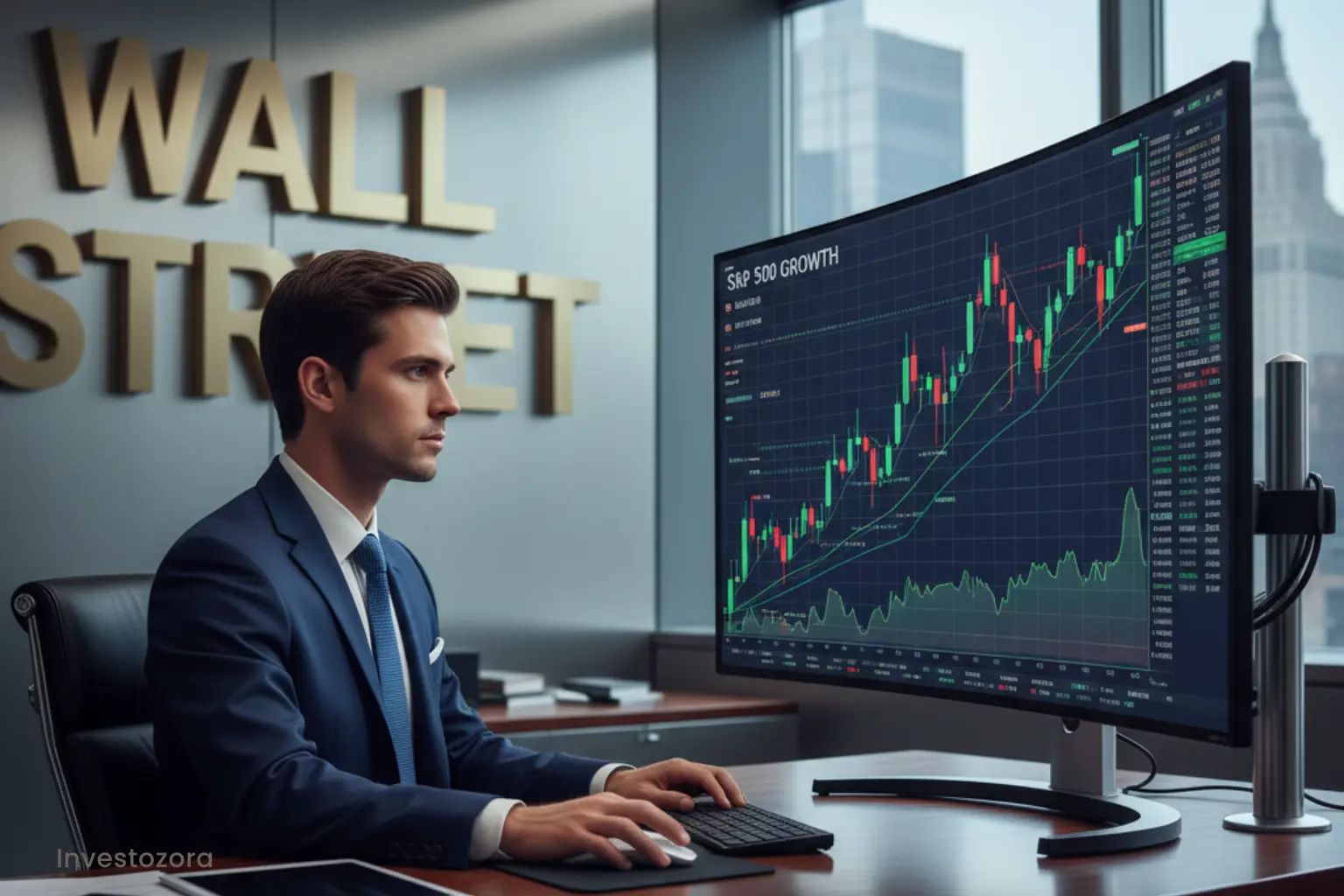The U.S. stock market is stepping into 2025 with a mix of optimism and caution. Inflation has eased compared to its 2022 highs, the Federal Reserve is signaling possible rate adjustments, and tech companies continue to drive much of the market’s momentum.
Yet uncertainty still lingers around a potential “soft landing” for the economy and global tensions. If you’re wondering whether now is the best time to invest, this guide breaks down the forces shaping the market and what smart investors should keep in mind.
| Question | Quick Answer (2025) |
|---|---|
| Is 2025 a good time to invest? | Yes, analysts suggest gradual entry into U.S. stocks due to interest rate cuts. |
| Biggest opportunity? | Tech & green energy sectors. |
| Biggest risk? | Inflation rebound and global slowdown. |
| Who should wait? | Short-term traders who need liquidity. |
What’s Driving the Stock Market in 2025?
The biggest factor influencing stocks right now is the Federal Reserve’s approach to interest rates. After a historic round of hikes in 2022–23, the Fed has slowed its pace, and many analysts expect rate cuts if inflation continues to cool.
Any policy shift directly affects borrowing costs for businesses and consumers, which in turn impacts corporate earnings and investor confidence. You can track official updates directly from the Federal Reserve, a primary source investors watch closely.
Another key driver is the continued dominance of technology. Artificial intelligence, clean energy, and electric vehicles are shaping growth not only in Silicon Valley but across the broader economy. For everyday investors, that means opportunities but also the risk of overvaluation in hyped-up sectors.
If you’re new to the markets, it may help to review what investing really means through our guide to investing basics, before diving into tech-heavy funds.
Consumer spending resilience also plays a role. Despite higher prices in recent years, U.S. households have remained relatively strong thanks to savings cushions and wage growth.
Building your own emergency fund before putting money into stocks is still critical it ensures you won’t be forced to sell investments during downturns. You can learn how much to save in our emergency fund guide.
Finally, investors can’t ignore geopolitics. From oil supply tensions to trade disputes, global events ripple through Wall Street. A diversified portfolio helps cushion against these shocks, and we’ll explore practical strategies later in this article.
For now, understanding these drivers interest rates, technology, consumer strength, and geopolitics is the first step in evaluating whether 2025 presents a good entry point.
Pros of Investing Right Now
One of the strongest reasons investors are paying attention in 2025 is valuation. While the market isn’t “cheap,” prices today are still below the record highs of late 2021. That gives long-term investors an opportunity to enter at lower levels compared to the peak.
Historically, buying consistently during periods of uncertainty often pays off, as compounding works in your favor. If you’re contributing to a 401(k) or IRA, adding to your portfolio now could lock in growth for decades especially when paired with smart retirement strategies.
Another upside is the strength of dividend-paying companies. Many U.S. blue-chip firms in sectors like healthcare and consumer goods are offering dividend yields well above savings accounts or CDs. These steady payouts can provide a cushion against volatility while still keeping you invested in the market.
For investors who want stability alongside growth, dividend stocks often act as a natural balance. If you’re weighing different places to park your cash, comparing high-yield savings rates alongside dividend yields can be a useful exercise see our high-yield savings accounts guide.
Finally, corporate earnings remain resilient, particularly in tech and healthcare. Even after years of turbulence, many companies are showing strong profits, which helps support stock prices. That means you’re not just speculating on hope you’re investing in businesses with real cash flow.
For new investors, robo-advisors can simplify this process by automatically spreading your money across funds that include these strong performers. If that sounds appealing, you might explore our breakdown of robo-advisors for beginners.
Taken together, valuations, dividends, and earnings create a strong case for why now could be the best time to invest for those with a long-term horizon.
Risks to Keep in Mind
Even with attractive entry points, the stock market in 2025 isn’t without risks. The biggest wild card remains the Federal Reserve. If inflation shows signs of heating up again, the Fed could pause or even raise rates, putting pressure on corporate profits and stock valuations.
Investors should follow official economic data directly from the Bureau of Economic Analysis, which publishes updates on GDP, consumer spending, and inflation trends that often sway markets.
Keeping an eye on these numbers helps you avoid being blindsided by policy changes.
Another risk is the possibility of a “soft landing” recession. While the economy has proven resilient, growth could still slow enough to impact employment and consumer demand. If layoffs rise, household budgets will tighten, and that can trickle into weaker earnings across multiple sectors.
This is why many financial planners recommend diversifying your investments and not putting every dollar into stocks. Exploring tools like a financial planner can give you perspective on balancing risk with opportunity see our guide to finding the best financial planner.
Lastly, investors should be wary of overvaluation in certain hot sectors, especially artificial intelligence and clean energy stocks. Just because a company is tied to a big trend doesn’t mean it’s priced fairly. Buying into hype can lead to losses if the market corrects.
Global conflicts and trade disputes also add another layer of unpredictability, affecting oil prices and global supply chains.
To protect yourself, it’s wise to separate your emergency savings from your portfolio so you’re never forced to sell investments during downturns. Our emergency fund guide explains how to build that safety net before you take on more risk.
Strategies for Smart Investors in 2025
A core strategy for 2025 is diversification. Instead of betting everything on a single stock or even one sector, spreading your money across industries like tech, healthcare, and energy helps reduce risk. This way, if one part of the market dips, gains in another can balance it out.
Diversification also means thinking beyond stocks exploring safe options like tax-free investments can add stability while keeping your portfolio tax-efficient. You can read more in our guide to tax-free investment strategies.
Another proven method is dollar-cost averaging. Rather than trying to time the market, investors can commit to investing a set amount at regular intervals for example, every two weeks or monthly. This approach smooths out the impact of market volatility and helps build wealth consistently over time.
Many retirement accounts already use this structure, and it works just as well with ETFs or index funds. If you’re just starting, our guide on what investing is explains why consistency beats chasing headlines.
Finally, it’s important to keep your financial foundation in place before you grow your investments. That means setting aside an emergency fund and having the right insurance coverage in case of unexpected events.
According to the Consumer Financial Protection Bureau, many Americans face financial hardship because they lack even a few months of savings. By prioritizing liquidity first, you can invest confidently without worrying about pulling money out during market downturns.
For further protection, exploring options like insurance coverage ensures you’re prepared for life’s uncertainties while staying invested long term.
Should You Wait or Act Now?
For long-term investors, history shows that staying invested usually outperforms waiting on the sidelines. The market will always have ups and downs, but compounding rewards those who stay consistent. Even if 2025 brings more volatility, regularly contributing to retirement accounts or ETFs can pay off over the years.
If you’re unsure how much risk fits your goals, reviewing retirement strategies can help you match investments with your time horizon see our guide on best retirement investment strategies.
Short-term investors, however, may want to tread carefully. Chasing speculative tech stocks or riding hype-driven rallies can lead to quick losses if the market corrects.
If your goals are less than five years away like saving for a down payment or paying off debt keeping funds in safer vehicles like high-yield savings accounts or even short-term Treasury bills may be smarter.
You can compare options in our high-yield savings guide. This way, your money works for you without the rollercoaster ride of short-term investing.
A balanced path often makes the most sense. You don’t have to choose between “all in” or “waiting forever.” Building a portfolio that mixes stocks, bonds, and cash ensures flexibility no matter what markets do. Using tools like robo-advisors can simplify this by automatically adjusting your portfolio to your preferences.
If you’re exploring this route, check our robo-advisors for beginners breakdown. At the end of the day, the best time to invest depends on your goals, timeline, and comfort with risk but taking action, even in small steps, beats being paralyzed by uncertainty.
Investozora uses only trusted, verified sources. We focus on government sites, official guidance, and first-hand data so readers get accurate, up-to-date information. All facts are checked against primary sources.
- Federal Reserve – “Monetary Policy.”
- Bureau of Economic Analysis (BEA) – “Economic Data.”
- Consumer Financial Protection Bureau (CFPB) – “Consumer Protection Guidance.”
Frequently Asked Questions
-
The information on this site is for educational and general guidance only. It is not intended as financial, legal, or investment advice. Always consult a licensed professional for advice specific to your situation. We do not guarantee the accuracy, completeness, or suitability of any content.





